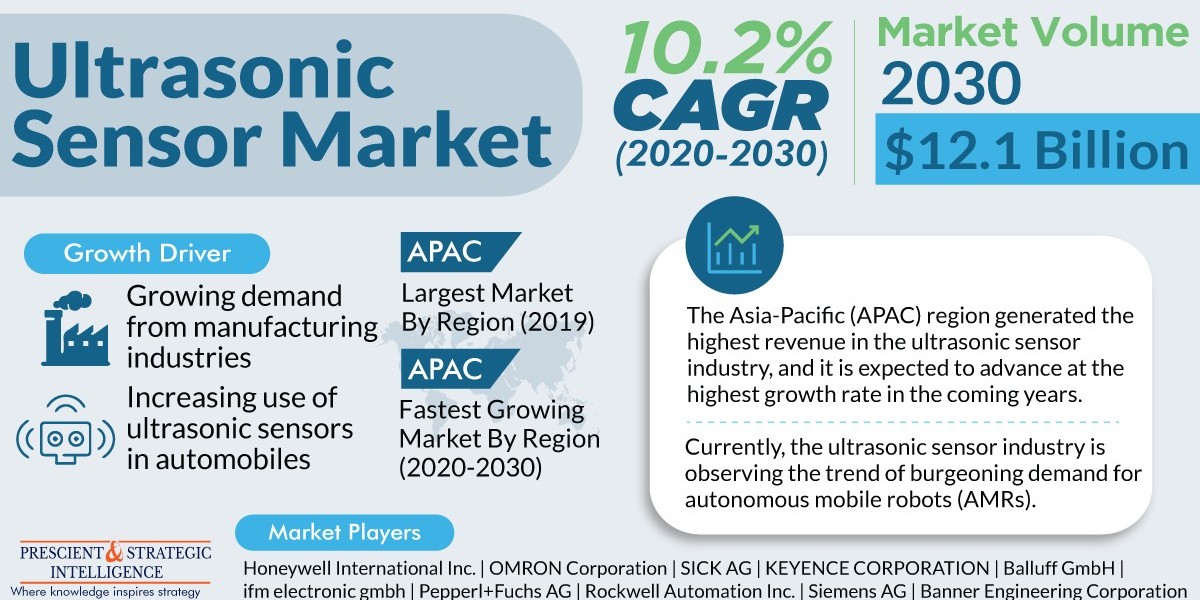The global ultrasonic sensor market is projected to attain a revenue of $12.1 billion by 2030, increasing from $4.1 billion in 2019, progressing at a 10.2% CAGR during the forecast period (2020–2030). The major factors leading to the growth of the market are rising usage of ultrasonic sensors in automobiles and increasing requirement for these devices from the manufacturing industry. On the basis of application, the market is divided into diameter measurement, loop control, object & pallet detection, distance measurement, and level measurement.
Out of these, the object & pallet detection division is predicted to witness the fastest growth during the forecast period. This is owing to the rising demand for ultrasonic sensors in autonomous cars for the detection of obstacles on roads. Furthermore, the rising demand for pallet detection from the food & beverage industry and the expanding packaging industry are also leading to the high demand for these sensors. The level measurement division held the major share of the market in 2019.
When type is considered, the ultrasonic sensor market is categorized into proximity detection and range measurement, between which, the proximity detection category accounted for the larger share of the market in 2019. These sensors are majorly being utilized in food & beverage processing applications. The category is further divided into 2 point proximity switch and proximity sensor. The range measurement category is projected to grow at the faster pace during the forecast period.
Geographically, the Asia-Pacific region dominated the ultrasonic sensor market in 2019 and is further predicted to contribute the largest revenue share to the market during the forecast period. The increasing production of automobile and expansion of the industrial manufacturing sector, particularly in Thailand, China, and India, are leading to the high demand for ultrasonic sensors in APAC. Within the region, China dominated the regional market in 2019, owing to the presence of large automotive, chemicals, and food & beverages industries.
A major factor leading to the growth of the ultrasonic sensor market is the increasing requirement for these products from the manufacturing industries. In these such industries, these devices are utilized for a number of applications, such as diameter measurement of roll, distance measurement, loop control, tank water level measurement, and height measurement. Furthermore, due to the expanding industrial production in developing countries, the demand for ultrasonic sensors is further projected to increase significantly in the coming years.
A key trend being witnessed in the ultrasonic sensor market is the rising demand for autonomous mobile robots (AMR). Owing to swift technological advancements and surging focus towards increased efficiency, productivity, and operational capacity in the manufacturing processes, the requirement for AMRs in industries such as medical, oil & gas, electronics, and automotive has been surging. AMRs are integrated with ultrasonic sensors for a number of applications, including for detecting obstacles and for determining the distance between objects.
In conclusion, the market is expected to be driven by the increasing need for AMRs and rising need for ultrasonic sensors in manufacturing sensors.








